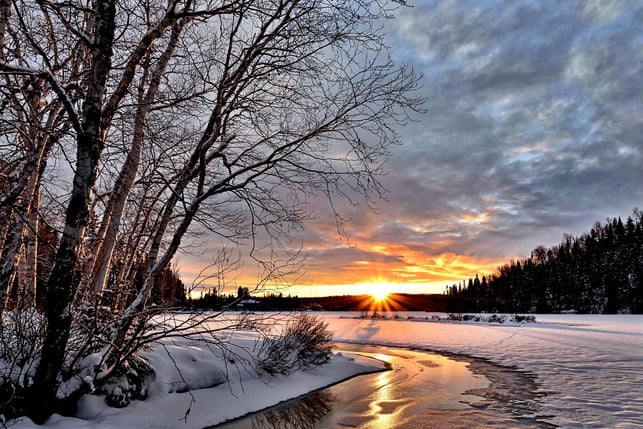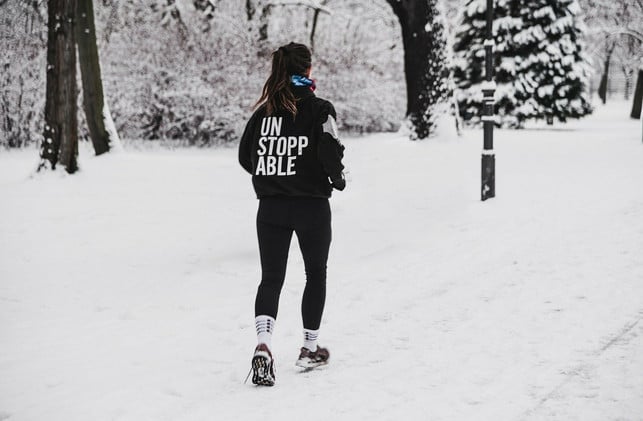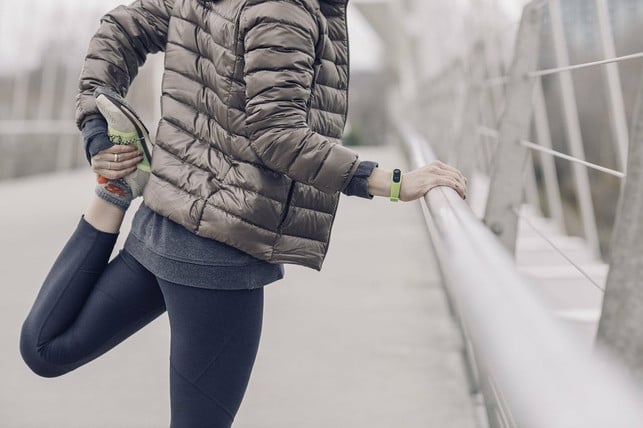
Jogging in winter can strengthen your health sustainably, even with minus degrees. We show you which factors you should pay particular attention to.
Jogging in winter can have a positive effect on your general well -being. Regardless of whether in winter or in summer – generally endurance sports strengthen your own fitness. However, jogging with minus degrees goes hand in hand with some risks. From when the freezing temperatures strain the body cannot be said exactly. That is why caution is the order of the day when running in winter.
In the following we will explain which six mistakes you can avoid when jogging in winter.
Error #1: You breathe through your mouth when jogging when the minus degrees

(Photo: CC0 / Pixabay / Alainaudet)
If you breathe through your mouth when jogging in winter, the cold air is a high load for your lungs and mucous membranes. The better and gentler way is to breathe through the nose if possible, as the breathing air can be heated and moistened first. If you are petted or have a blocked nose, you should let it be better with jogging. The wet breathing is important when it comes to outdoor sports at cold temperatures.
So that you can breathe through your nose as continuously and relaxed as possible, your jogging unit should run out calmly and easily. If you want, you can cover your mouth with a thin cloth. This helps you to maintain the nasal breathing and also protects against the cold.
Error #2: You wear the wrong clothes when jogging in winter

(Photo: CC0 / Pixabay / Wal_172619)
At first glance, it seems logical to pack yourself with a thick layer when jogging in winter. It can happen that you put on too warm and too uncomfortable. You should take into account that your body temperature rises despite the cold and you can even sweat.
If you get warm quickly, you shouldn’t walk in shorts in winter. The trick is to protect the right parts of the body and to carry the clothing in layers:
- An undershirt, a long -sleeved garment and a weather -compatible sports jacket or vest are ideal to protect your hull area. Especially when an icy wind goes, you shouldn’t do without a vest.
- You should cover your hands with gloves, your feet and ankles with long socks and your ears with a hat or a headband because they are particularly sensitive to the cold.
- When running in the dark, make sure to wear light clothing and possibly a headlamp or reflectors so that you will not be overlooked.
As a rule of thumb: you freeze something at the beginning, you are just put on. After a few more meters you get nice and warm through the movement. If you are still missing suitable clothes, have a look at our guide for sustainable sports fashion.
Error #3: You do too short or warm phases before jogging at the time of yogging at freezing temperatures

(Photo: CC0 / Pixabay / Stocksnap)
When jogging in winter, you shouldn’t run your head over your head because at these temperatures the risk of strains and tension is greater. So that you can prevent injuries and get your muscles and tendons used to the cold, you should get warm outside for a few minutes. For example, go slower with three to four minutes. Then you can stretch. The warm-up can run as follows:
- Let the joints circle from head to toe one after the other
- Stretch exercises
- Squat
- slight jumps
You should only start jogging when you feel really warm.
Error #4: You run too fast, especially at freezing temperatures

(Photo: CC0 / Pixabay / Nickype)
As already mentioned, too high running speed can make your breathing through your nose. In addition, you can come out of balance and in the worst case you can injure yourself if you are traveling too quickly on slippery soil.
So that you can keep your balance and intercept your fall in good time, your running speed should be rather slow and focused, here the talk test will also help you. Short instead of long steps help you keep control.
Maybe the slow jogging technique in winter is something for you. To be on the safe side, you should take a first aid course. This not only uses you, but also others.
Error #5: You drink too little in the cold and stay outside too long

(Photo: CC0 / Pixabay / Wal_172619)
During the jogging in cold, we feel less thirsty compared to summer. Avoid the mistake of drinking too little and get enough water both before and after running.
If you are ready with your training, you shouldn’t stand around in the cold forever. Above all, the lowest layer of your running outfit, which is sweaty, must be changed quickly or moved out.
If you are inside, you can also stretch your legs there and shower warm afterwards.
Error #6: You do not support your recovery phase

(Photo: CC0 / Pixabay / Congerdesign)
Immediately after a sporting activity, especially during the winter cold period, you are more susceptible to viruses and bacteria. It is therefore very important that you recover sufficiently and support your regeneration phase. The following points show you what you can do for it.
- Pay attention to a balanced diet
- prepare a hot herbal tea
- Pay attention to a relaxing sleep
- Support your immune system
With information from the dpa.
Read more on utopia.de:
- Plogging: This jogging trend from Sweden is good for the environment
- Everything fit? There are better & more sustainable sports fashion here
- Workout at home: ideas for sport in your own four walls
Revised by Lea Hermann
** marked with ** or orange underlined Links to sources of supply are partially partner links: If you buy here, you will actively support Techzle\.com, because we will then receive a small part of the sales proceeds. More information.